Sky Car pilot aircraft Pitts (USA)
Custom idea
The author of the Sai Car project was John W. Pitts of Detroit. The details of his biography are unknown, but it is obvious that this man showed great interest in new aircraft designs. In the early twenties of the last century, like other enthusiasts, J.W. Pitts dealt with the problem of vertical take-off. Its successful solution promised certain advantages and benefits.
Developing the idea of a “conventional” rotor propeller, Pitts proposed an original design with a large number of special blades. According to his calculations, such a system could create increased lifting force. In 1924, the inventor applied for a patent. Soon, his idea was enshrined in the US1602778A Propeller for flying machines document.
The original design of the propeller provided for the use of a large number of articulated triangular blades of small thickness. In addition, it was proposed to use a special gearbox that provides rotation and reciprocating movement of the screw shaft.
The rotation of the screw was to create a lifting force due to the flow around the blades. In addition, it was planned to create additional force due to the movement of the entire screw. When moving the entire structure up, the moving blades had to turn down, allowing air to pass through the screw. Moving down, the screw forced the blades to return to their original angle of attack and form an almost continuous disk resting on air.
Prototype
In 1928, J. Pitts began construction of a prototype. Another enthusiast helped him in this matter. aviation, W.P. Kindry. A car called Sky Car was built literally in the garage and on its own. Any third-party organizations or sponsors were not involved in the project. However, they could join the work later, after successful testing.
The aircraft was built on the basis of a light frame, on which all the necessary units were placed. The frame was assembled from metal pipes and supplemented with a pyramid-shaped structure for mounting units. In front of the machine was an engine with auxiliary devices, a gearbox of an original design was fixed to them. In the tail, with the extension beyond the platform, the pilot's seat was placed. In the corners of the frame, automobile wheels were fixed. An “umbrella” of a non-standard propeller towered above the aircraft. The resulting machine did not differ in large size and weight.
Sky Car was equipped with a 65 hp gasoline-fueled water-cooled engine. The engine was placed across the frame, next to it was a radiator. Using a chain drive, power was transmitted to the gearbox of the original design. A rather complex set of gears, cranks, etc., was placed inside the convex body, due to which the screw was rotated with simultaneous up-down movement. The power plant controls were brought to the pilot's seat.
The propeller for Sky Car was based on the ideas of a patent. The basis of the screw was a frame of two concentric rings connected by a large number of radial spars. To compensate for the loads, a set of braces over the frame was used. 60 of thin triangular blades articulated on the side members. They could freely move down on 90 ° and return to their original position; moving above was excluded.
Sky Car was a technology demonstrator and therefore did not receive advanced controls. In fact, this aircraft was only to take off and land, confirming its capabilities. Or disprove the performance of the proposed design. Some sources mention the intention of Pitts and Kindry to create a car with the ability to fly and travel on roads, but such information does not look plausible - at least in relation to experienced equipment.
Failed tests
In the same 1928, enthusiasts tested their experimental apparatus. The car was taken to an open area, the engine was started and the engine revs increased. According to basic ideas, she had to tear herself off the ground and, preferably, hover at a low altitude.
The engine and gearbox rotated the original screw and made it jump. The screw was able to create some lift, however, it was insufficient and unstable. At the moment the screw was moved down and the gaps between the blades were closed, the aircraft bounced a little, but when it returned, it returned to the ground. Newsreel has kept an attempt to take off an unusual car. It shows how the Sky Car bounced in place and rotated around a vertical axis due to the propeller's torque. There is reason to believe that such jumps adversely affected the structure and led to minor breakdowns.
It should be noted that in the context of newsreels there is some misunderstanding. For some reason, shots from Sky Car trials in 1928 are often attributed to an earlier era. The car itself is considered as an early and unsuccessful alternative to horizontal takeoff aircraft with a fixed wing.
Second attempt
Pitts and Kindry were not satisfied with the results of the first tests and continued to work. They believed in the prospects of an unusual screw and decided to redesign the structure, eliminating its obvious shortcomings. First of all, they took up the power plant and other elements of the aircraft.
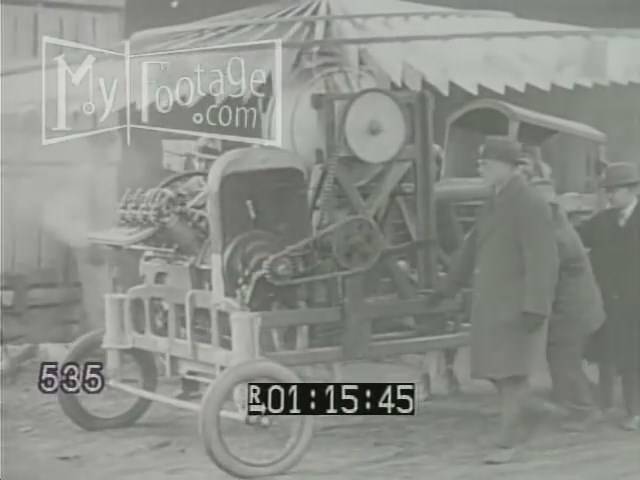
Rollout of the second prototype
The frame of the device was redesigned to increase rigidity and strength in order to avoid new breakdowns. The chassis was made three-wheeled with a front axle and an independent rear wheel. All wheels received shock absorbers on vertical springs. A hard roof appeared over the pilot’s seat, which can protect a person from a screw. The gearbox remained the same, but an eight-cylinder Curtiss OX-5 VN engine with 90 horsepower was now connected to it. The total mass of the structure increased to 1200 kg.
A new version of the LP Sky Car was built and put to the test. Despite all the design improvements, the test results were the same. Experimental aircraft joyfully jumped around the site, slowly turning around a vertical axis. A full take-off, not to mention a controlled flight, was impossible.
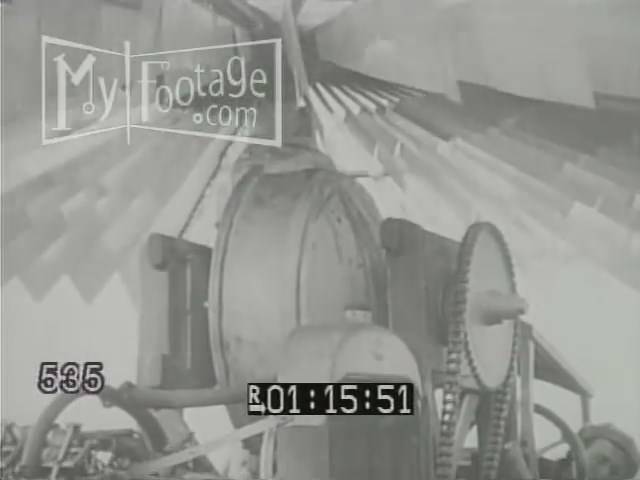
Screw group close-up
History Sly Car project ended with tests of the second prototype. However, enthusiasts did not abandon the original ideas and continued to work. It is known about new attempts to use the proprietary propeller on other aircraft of various kinds. However, they did not affect the history of aviation development, which shows the real prospects of such a design.
Problem screw
It is easy to guess that the failures of Sky Car and other developments of J.U. Pitts were associated with an unusual design propeller. As tests showed, he could not provide the required lifting force due to the presence of a number of "inborn" shortcomings. Their correction would require a radical redesign of the entire structure.
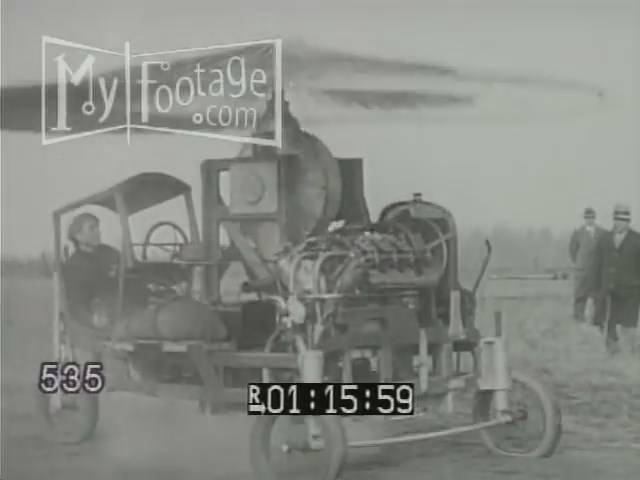
Another unsuccessful take-off attempt
A “regular” propeller generates traction all the time due to the rotation and interaction of the blades with the environment. The Pitts screw also created some lift due to rotation, but it was insufficient to lift the aircraft into the air. It was proposed to supplement this force with another one created during the downward movement of the screw in the configuration of a solid or almost solid disk. As shown by jumping aircraft, this force was sufficient for a short separation from the ground.
However, the Pitts screw created great traction only periodically. The frequency of its appearance was insufficient for any prolonged rise in the air. Perhaps the situation could be corrected by increasing the frequency of movement of the screw or increasing speed. However, this required a more powerful engine, a reinforced gearbox, etc. The expected increase in characteristics with all this was leveled by a clear increase in mass.
The potential characteristics of the original screw were insufficient for practical use. To obtain optimal parameters, a cardinal processing of the screw was required. At the same time, in the late twenties there were already quite effective rotors of the traditional scheme. In competition with them, the design of J.W. Pitts had no chance.
Experimental Sky Car aircraft could not take off, but only jumped and spun. However, in this case, they gave a real result. Aircraft manufacturers were able to study the capabilities of one of the proposed designs and establish its insolvency. In addition, the development of J.U. Pitts was able to stay in history as one of the funniest attempts to take to the air - for several decades in a row, the newsreel of the trials has made the audience smile.
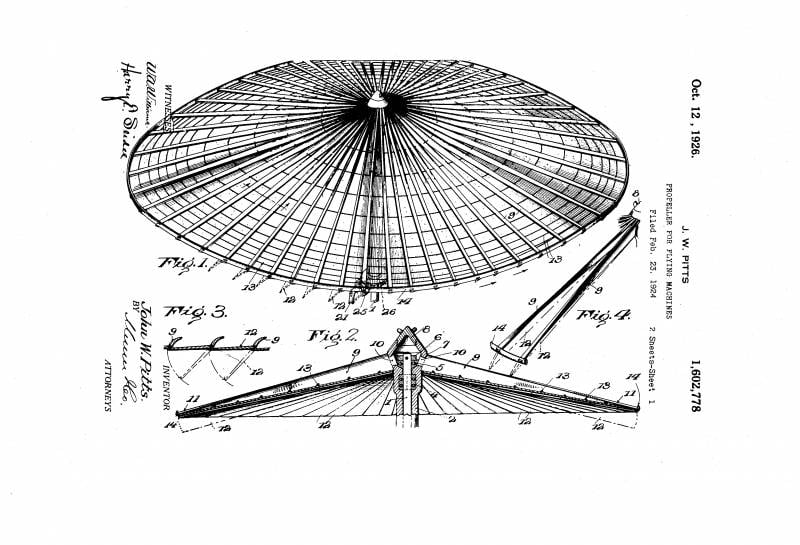
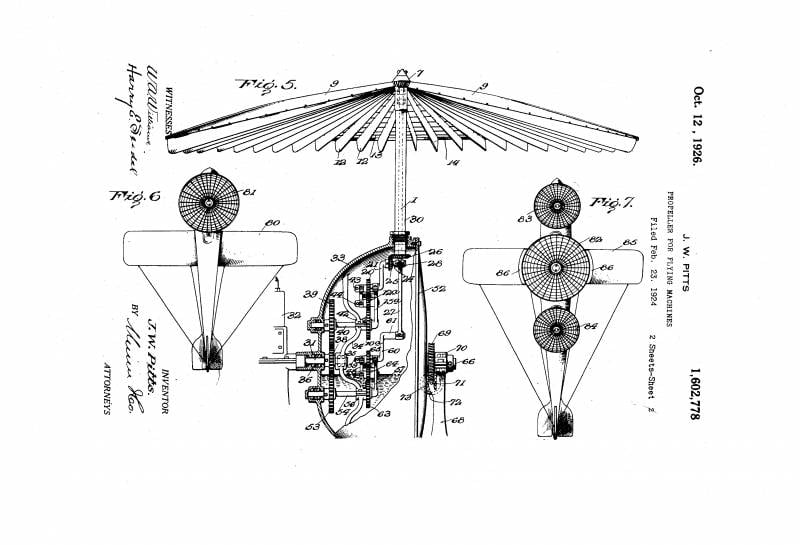
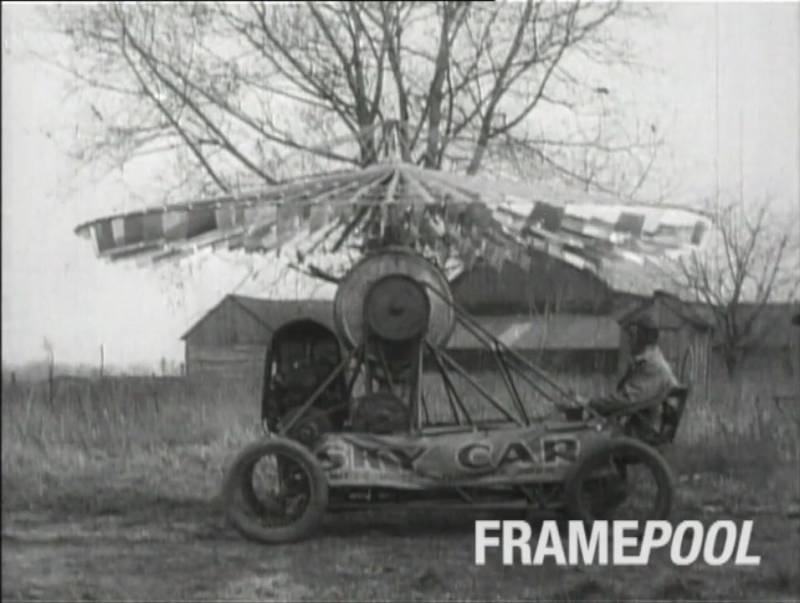
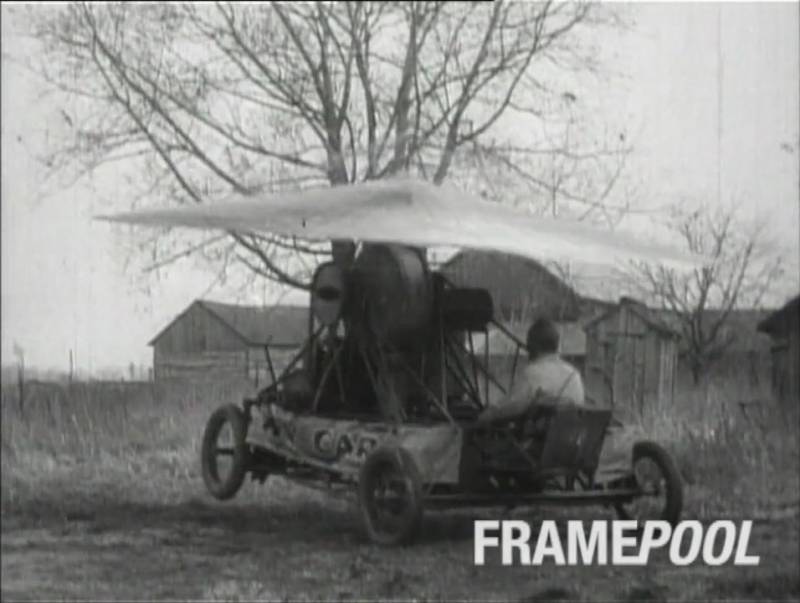
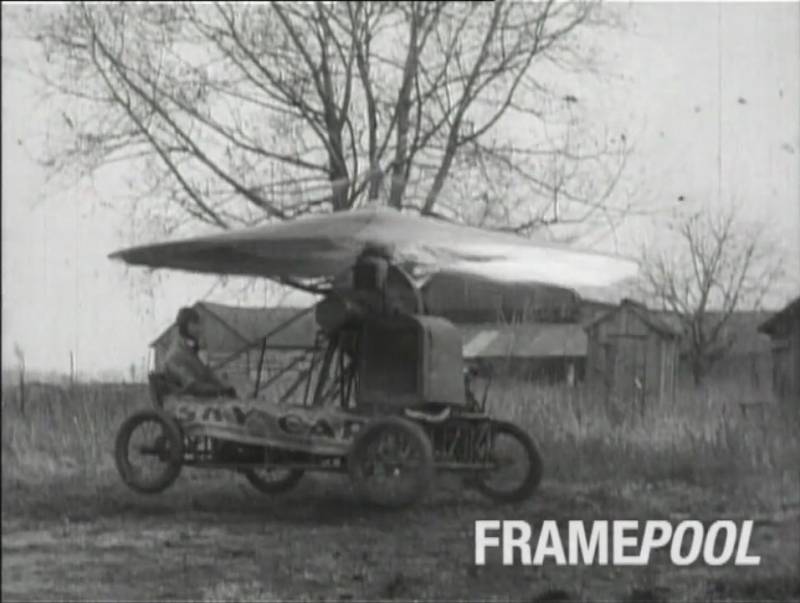
Information